Sometimes, all it takes for trust to be shaken, business relationships to fall apart, or great ideas to lose momentum, is a poorly understood agreement. Yet, despite their pivotal role in organizations and personal life, many people tread through their dealings with barely a second thought about what makes an agreement valid, clear, and enforceable, or how much is at stake when something as simple as an approval is overlooked.
This article untangles the web of contract formation, reveals the different genres of agreements shaping businesses, and walks you through the journey each arrangement travels, from an initial idea to digital signature, storage, and, when needed, dispute resolution.
Drawing from my two decades of experience, I’ll add real-world examples, personal insights, and even the occasional second guess. No magic words. Just plain talk designed to save you money, frustration, and missed opportunities, with occasional reminders of how platforms like CloudSign.ie can make the difference between “job done” and “job done well.” Whether you’re a freelancer, managing your first gig, or sitting in a boardroom, this is the guide you didn’t know you needed, until now.
The basic formation: how agreements come alive
An agreement doesn’t simply pop into existence. There is a rhythm to its creation, a combination of action, response, and mutual trust, but also, sometimes, a healthy bit of skepticism.
Offer: the starting point
Every arrangement kicks off with one side putting forward terms to another party. This offer spells out what’s being suggested, be it a business service, a product sale, or the licensing of software.
- A graphic designer proposes to build a company’s new brand guidelines for €2,000, delivering in four weeks.
- An IT firm sets out an arrangement with a client to provide on-site support for six months, billed monthly.
- A retailer agrees to distribute a new gadget in all Irish stores, unique packaging included.
An offer must be clear enough that the person on the receiving end knows exactly what’s up for agreement. Ambiguity means trouble.
A proper agreement starts with a solid, unambiguous offer.
Acceptance: no guessing allowed
Once an offer is out, it needs a clear “yes” for things to move ahead. This acceptance can take different forms:
- A verbal “I agree” during a call (risky, unless followed up in writing).
- An email reply confirming all the terms as stated.
- Clicking “I accept” on an e-signature platform like CloudSign.ie, which logs every action for clarity.
Where acceptance isn’t clear, confusion breeds. People sometimes believe silence suggests agreement, but unless your arrangement spells out that “no reply means yes,” silence rarely counts.
Consideration: there has to be a ‘something’
No one gives something for nothing, not in formal arrangements. That “something” is called ‘consideration’. It’s what each side brings to the table.
- Money for a product or service.
- A promise to do (or not do) something in return.
- Even a swap of services counts.
If there’s no exchange, no value passing hands, there’s no enforceable deal. Imagine two friends: one offers to paint a fence for free. If they don’t show up, you can’t run to court. But if you promised to make dinner in return, even a handshake gets more weight.
Capacity and intention
There’s also the matter of who can sign up to an agreement (capacity) and whether both sides meant to create a binding arrangement (intention to create legal relations).
- Minors generally can’t make binding commercial agreements (with few exceptions).
- Agreements between family members or friends are usually presumed not to be legally binding, unless evidence says otherwise.
Business arrangements, by contrast, are usually presumed to be legally binding unless someone shows otherwise.
Writing or not?
Not every agreement must be written down, but you’re far better off with a written record (digital or hard copy). Some, like the sale of land, must always be in writing.
A written contract, especially when managed through a platform like CloudSign.ie, clears up disputes over what was agreed. Plus, digital platforms easily track versions, signatures, and who agreed to what, adding layers of protection.

Types of contracts in business: finding the right fit
Different situations call for different agreement types. Some are strict, others open to change; some protect one side more. Let’s look at the classics, plus a few that can be sneaky.
Fixed-price contracts
These are very common for projects with clear outcomes. One side agrees to pay a set fee for the work, regardless of actual costs.
- Benefits: Predictability for both sides; no surprise bills.
- Risks: If costs rise unexpectedly, the provider takes the loss. If the scope isn’t clear, disputes arise.
An example? A website is delivered for €8,000, no matter how much time it actually takes the developer.
Cost-reimbursement contracts
Here, the buyer covers actual costs, plus an agreed profit margin.
- Benefits: Good for R&D, when expenses can’t be nailed down in advance.
- Risks: Less price certainty; the buyer might get bigger bills than first expected.
Think: A tech company agrees to fund the development of a prototype, paying expenses plus 10%.
Bilateral and unilateral arrangements
- Bilateral: Both sides exchange promises (most day-to-day business agreements are like this).
- Unilateral: Only one side promises something, and only pays if the other party performs (think reward posters: “€500 for lost dog returned”).
Express and implied agreements
Not everything must be written or even said out loud:
- Express: Terms are clearly stated (written or oral).
- Implied: Created by actions or the setting. Buy groceries at the shop? The law “implies” you’ll pay.
Adhesion contracts: the pre-set templates
Ever signed up for a new app or joined Wi-Fi at the airport? You probably ticked a box accepting a pre-drafted policy, no negotiation, just “take it or leave it.” These are called adhesion forms.
- Benefits: Quick, efficient; users don’t have to rewrite the rules every time.
- Risks: They can sometimes favor the business, especially if the language is one-sided or unfair. Courts occasionally invalidate harsh conditions buried in the fine print.
Read everything, even the tiny print, especially with “click to accept” agreements.
Industry-unique arrangements
Insurance, employment, and partnership contracts often have their own definitions, statutory rules, or quirks. For example, employment deals in Ireland must comply with minimum rights under national law, regardless of what’s written down.
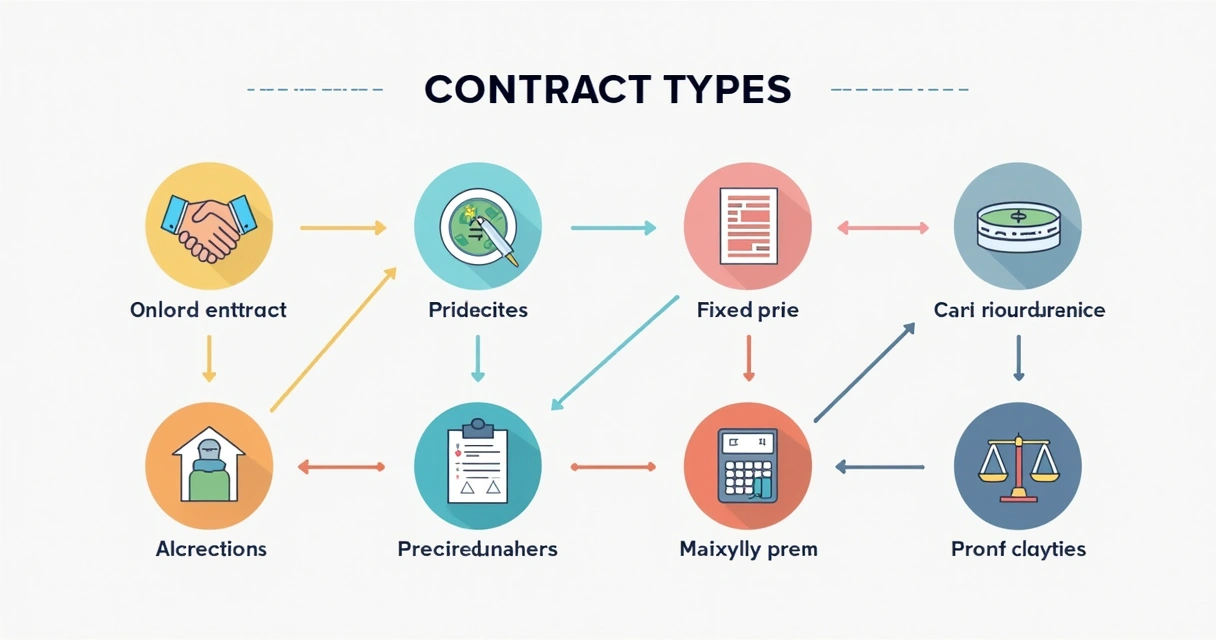
Core elements of an effective contract: not just paper and ink
What makes a document not just “official,” but legally meaningful? There are several building blocks that every agreement should include.
Identification of the parties
The basics must be clear: who’s agreeing? Each party needs to be named (business name, company number, or for individuals, their full legal name and address).
- Practical tip: If a business is signing, always confirm that the person electronically signing has authority. Platforms like CloudSign.ie automatically log which registered user signed, reducing the risk of mistaken identity.
Scope and definitions
Broad statements cause headaches. Spell out what’s included, and what’s not. Define terms that could mean more than one thing (“project deliverables,” “confidential information,” “completion date”).
Payment clauses
- Amounts due, payment methods, timelines (e.g., “within 30 days of invoice”).
- Lateness penalties or incentives for early payment.
Duration and termination
- How long does it last, until an event, fixed period, or ongoing until canceled?
- Ways to exit: breach, notice, force majeure (events out of either party’s control).
Indemnity, limitation of liability, and risk allocation
If something goes wrong, who bears the cost? Indemnity provisions outline when one party must cover the other’s losses (e.g., “If our software causes a data breach, we will cover your related losses, up to €100,000”).
- Limitation of liability keeps even big companies from being wiped out by a single disaster.
- Risk allocation is at the heart of every contract, even if it’s tucked into the fine print.
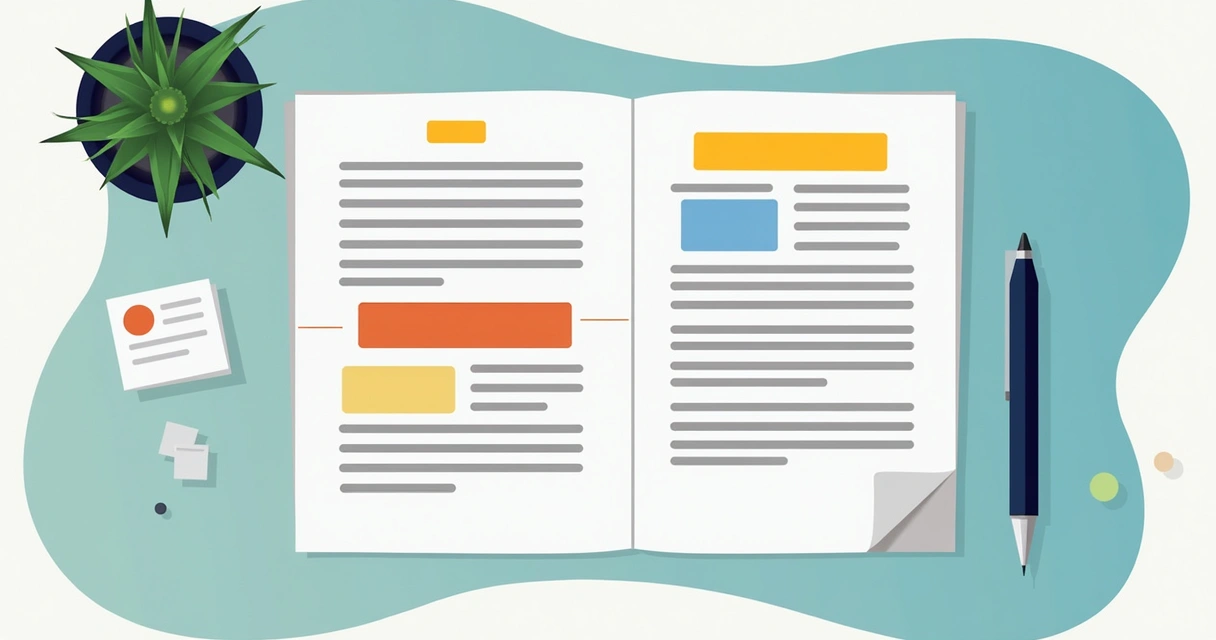
Terms and conditions (the rules)
These spell out who must do what, when, and how.
- Delivery and acceptance criteria.
- Warranties (guarantees of quality or performance).
- Data protection (especially post-GDPR in the EU).
Want more on the legal backdrop, especially for e-signatures? See this guide on electronic signature laws in Ireland.
Relationship between parties
- Are you agents, independent contractors, joint venturers? A simple clause can avoid future tax, employment, or liability headaches.
Data protection and confidentiality clauses
- Confidentiality (“NDA”) provisions protect sensitive info exchanged during a project.
- Data processing clauses have become non-negotiables, especially with increasing fines for breaches under the GDPR.
Signature section
No matter how much tech we use, a clear spot for signatures (digital or ink) is still required. E-signature services such as CloudSign.ie record metadata (who, when, where), making disputes less likely.
Annexes and schedules
Sometimes, not everything fits neatly in a few pages. Attachments handle detailed specifications, complex pricing, or additional rules (such as insurance requirements or service level agreements).
A short agreement with vague terms breeds conflict. A clear, thorough agreement stops it before it can begin.
The lifecycle: from blank page to executed agreement
Every business deal, from the simplest NDA to the largest cross-border deal, goes through a predictable series of phases. Sometimes this arc is weeks, sometimes hours, especially thanks to modern digital solutions.
Stage 1: initiation , the idea stage
A need arises, maybe the business wants to purchase new software or partner with a supplier. Here, someone often drafts the basics in a Word file or email. Sometimes it’s a verbal sketch at this stage.
- Tip: Keep notes on the initial ideas and what the parties expect; these details avoid “that's not what I meant” arguments later.
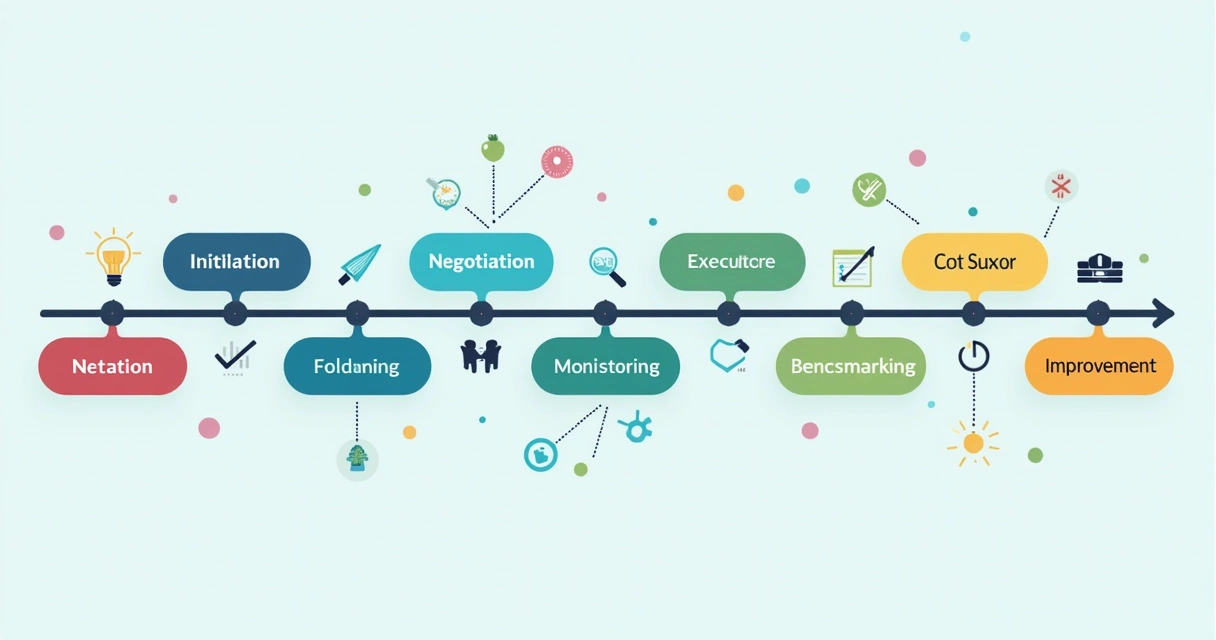
Stage 2: negotiation , beyond the headlines
This is where lots of legal and commercial maneuvering happens. Both sides shape the agreement, striking out unfavorable clauses or adding missing promises.
- Back-and-forth emails or track changes in documents.
- Redlines marked up, terms swapped out, or questions raised.
Stage 3: execution , making it official
Once final text is agreed (after the legal teams, if involved, finally finish their reviews), both sides sign.
- Traditionally with pen and ink.
- Increasingly via e-signature platforms like CloudSign.ie, which accelerate deals, lock the timeline, and automate notifications.
Stage 4: management and monitoring
It's signed, what now? It should be more than a dusty file. Ongoing monitoring means:
- Tracking deadlines or renewal dates.
- Ensuring progress matches the obligations.
- Storing documents securely for quick access (increasingly in the cloud).
A report by Icertis found that 29% of staff time centers on managing deals, so making it smooth is no trivial detail.
Stage 5: renewal or closure
Not every deal lasts forever. Some need revisited, maybe prices update, terms change, or parties want to adjust the scope or end the relationship altogether.
A review from Ironclad showed that best-in-class companies renew far more agreements proactively than their slower peers, protecting value and avoiding gaps.
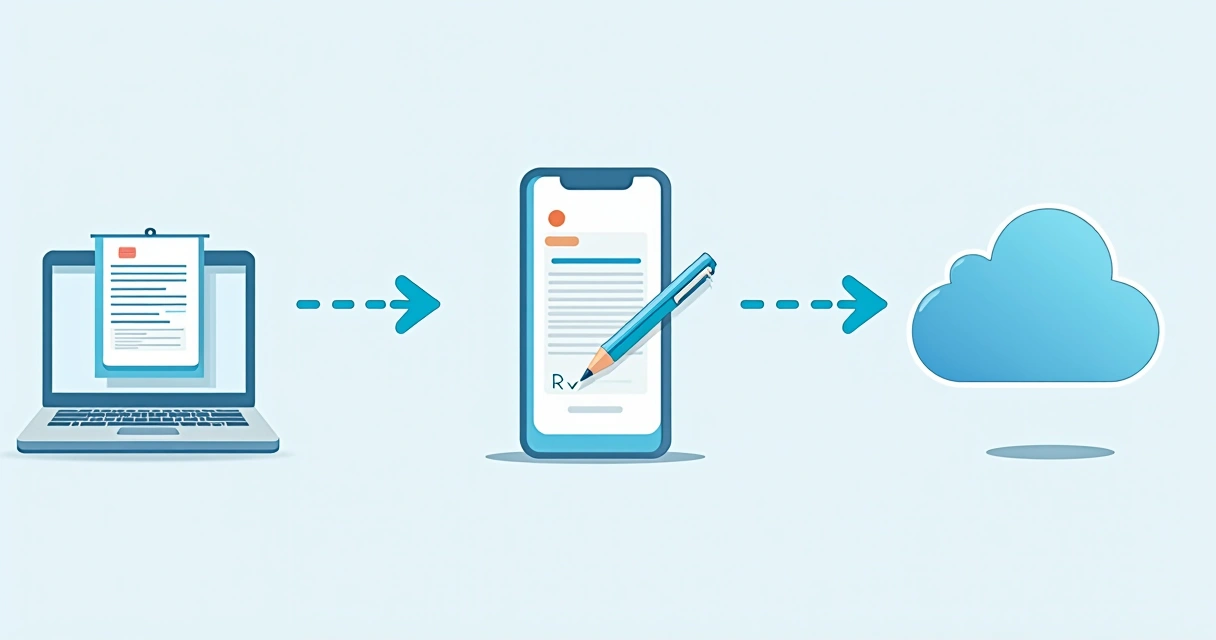
Stage 6: benchmarking and continuous improvement
Some organizations systematically review agreements to see:
- What went right or wrong during execution.
- Whether supplier, customer, or employee choice should change in the next round.
- What improvements can be brought into the next cycle, maybe a better e-signature workflow or clearer milestones.
Stage 7: storage and recall
Agreements should be archived where they’re easy to find in a dispute, regulatory audit, or if someone changes role and a handover is needed. Lost documents aren’t just embarrassing, they can cost real money.
Leading experts at G2 advocate for contract lifecycle management systems with secure storage, search, and audit trails, something CloudSign.ie offers with no-fuss searches and automatic backups.
If you want a full rundown, Concord details these seven contract lifecycle phases.

How digital changes everything
Where once this lifecycle played out in person, now e-signature and cloud-based platforms have changed the pace:
- Drafts collaborate in real time, no more lost USB drives.
- Signatures happen from anywhere, tracked and timestamped.
- Automatic deadline reminders mean fewer missed obligations, a statistic behind the €1,000s lost every year by Irish businesses who ignore such technology, as discussed in common e-signing errors to avoid.
CloudSign.ie covers the lifecycle from draft to renewal, with a free plan for solopreneurs needing only a handful of envelopes per month, and you can sign up in minutes, with one sender and up to 21 envelopes every billing period.
Financial and operational risks: why managing agreements matters
As dry as paperwork can seem, stories of lost revenue, fines, or wrecked relationships are shockingly common. Here’s why precise management isn’t just an admin tick-box.
- Missed deadlines mean missed payments, lost discounts, or unwanted auto-renewals.
- Poor storage can mean the only copy is in someone’s inbox, impossible to find later.
- Hidden obligations let value slip away.
Data from Quantivate’s survey found that 62% of organizations have faced major risks recently, often rooted in poor oversight of negotiated terms.
A single missed clause can cost a company more than a year’s fees for a great e-signature solution.

It’s not always disaster, though. With proper systems:
- Competition and suppliers are held to agreed performance milestones.
- Audits are passed with less sweat, your obligations and renewals are mapped and accessible.
- Less money and energy is spent on “old-fashioned” admin.
The anatomy of contractual clauses, what to look for, what to question
Indemnity clauses
This clause often triggers heated discussion. In essence, who pays if something goes really wrong?
- Example: A software provider agrees to indemnify a customer if a data breach results from their failure to maintain security standards.
Watch for capped liability (limits on payout) and carve-outs (e.g., “no cover for losses from gross negligence”).
Standards, obligations, and terms
- Must the provider follow industry best practice or just “reasonable skill and care”?
- Are deadlines realistic, or too tight to meet without cutting corners?
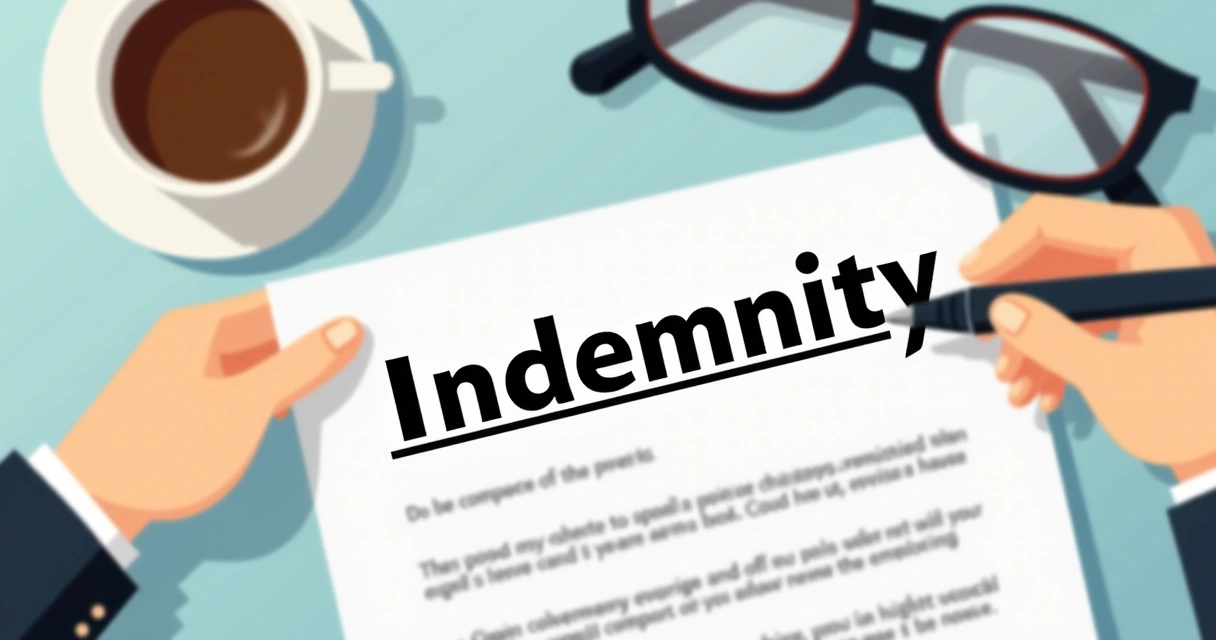
Relationship clauses
- Am I signing as an employee, consultant, or agent?
- This matters for employment law, tax, and who takes on which risks.
Data protection and confidentiality
Under GDPR, mishandling data can mean fines of up to €20 million or 4% of global revenue. Data protection clauses must be robust, stating where data is stored, how it’s used, and who has access.
For those handling sensitive data or signing agreements in regulated industries, see our dedicated guide for GDPR-compliant digital signatures in Ireland.
Every agreement is only as strong as its weakest (or most confusing) clause.
Remedies and penalties
- What can one side do if the other fails to deliver?
- Financial penalties, the right to terminate, seeking other suppliers, or (rarely) court action.
Governing law and jurisdiction
- Which country’s law governs the deal, critical for cross-border arrangements.
- Where will disputes be handled (local courts, arbitration, or mediation)?
How breaches happen, and what can be done
Not everything goes to plan. When one side fails to honor their promises, what happens next depends on what’s in the contract, and, sometimes, what’s not.
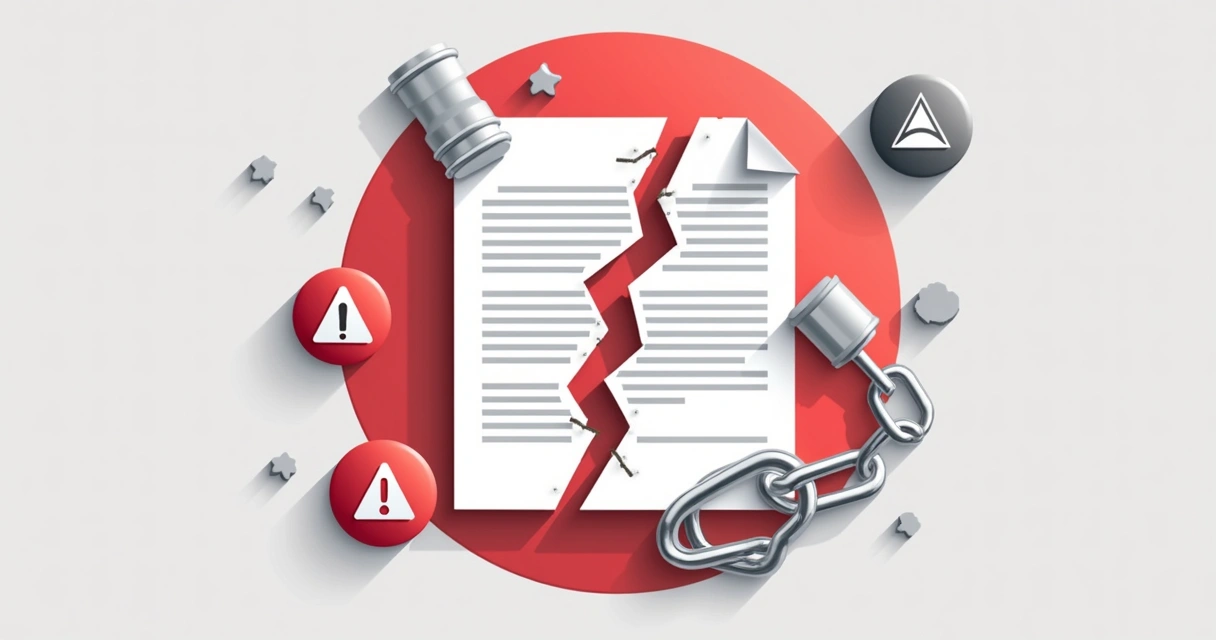
Breach, types and triggers
- Minor breach: The goods are delivered late, but you still get what you paid for.
- Material breach: The supplier delivers a different product, or doesn’t deliver at all.
- Anticipatory breach: One party says, in advance, that they won’t be able to meet the deadline.
Consequences and remedies
- Damages: Payment to the injured side for losses suffered (actual loss, not windfall gains).
- Termination: Ending the agreement early, often with written notice.
- Specific performance: Rare, but sometimes a court will order the party to do what they promised (more common in unique property transactions).
Litigation is a last resort. Many agreements now channel disputes through mediation or arbitration. These offer privacy and are typically faster and less costly.
Limiting losses, mitigation
If something goes awry, the wronged party must try to ease the loss (“mitigate”). If the delivery fails, find an alternative and claim only the added cost, not the whole value.
Practical example
A business contracts with a designer to launch a website by a set date. The designer delivers late. As a result, you lose out on a major client who was waiting for the launch. You can claim only losses that are a direct result and not “remote” (for instance, anticipated profits from the client, only if the designer reasonably knew about the consequence at the time of signing).
Quick action and documentation are your strongest allies when agreements unravel.
Adhesion contracts: convenience, risk, and how courts see them
As mentioned, adhesion or “boilerplate” contracts, those prepared by one side and just signed (or clicked) by the other, make commerce move faster. But they carry mixed blessings.
- Pros: Standardization means reduced admin, clear expectations, and speed, ideal for SaaS subscriptions or mobile phone contracts.
- Cons: Terms may be slanted to favor the provider, and it’s very hard for the customer to negotiate changes. Some providers include clauses that courts will strike out if they’re unfair, ambiguous, or hidden.
Court attitudes
Irish and EU courts usually enforce these arrangements if:
- The terms are understandable (not hidden in legalese).
- The customer had a chance to review before accepting.
- Nothing illegal or “unconscionable” (shocking unfairness) is lurking within.
A basic test: if you sign, you’re typically bound. But unfair surprises can give you an out.

Tips for adhesion contract users
- Read the key terms, not just the summaries, they matter when disputes happen.
- Ask for changes or clarifications, especially with expensive or long-term services.
- Know your consumer rights; in the EU, some terms can’t be unfair even in “standard form” contracts.
- Digital platforms, such as CloudSign.ie, highlight changes and offer clause summaries to avoid hidden risks.
Practical contract management: when software makes real difference
A grumble I hear from both small businesses and major corporates: “If only our contracts were easier to manage.” For a long time, managing stacks of paperwork, missed emails, and panic over looming deadlines felt inevitable. That’s no longer true.
Benefits of modern e-signature and tracking solutions
- Saves time and money: Faster execution; no printing or scanning.
- Security: Tamper-proof history logs and cloud storage.
- Transparency: Audit trails that prove who signed, when, and from where.
- Deadline management: Automated reminders for renewals or review dates.
- Accessibility: Agreements are retrievable from any device, anywhere, crucial in today’s remote/hybrid work world.
Case studies, like those found on our freelancer e-signature guide, show that onboarding or closing deals is 3–5x faster when agreements are handled digitally.
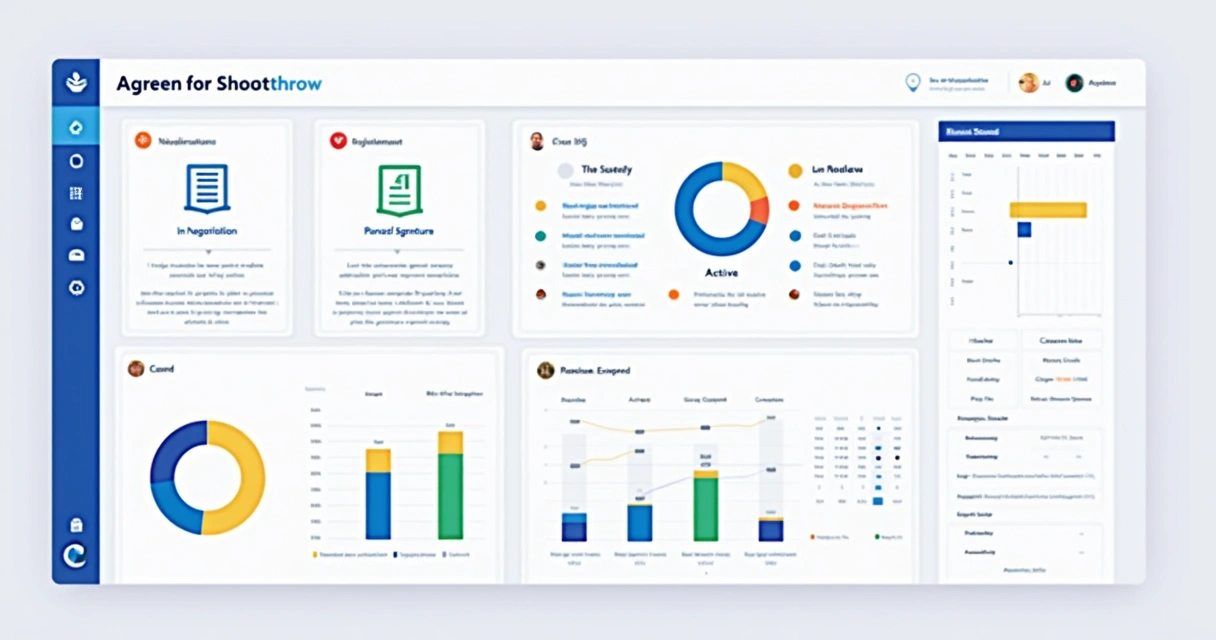
While some big-name competitors boast advanced features, CloudSign.ie offers AI-powered analysis for contract risk and opportunity assessment directly within the workflow, making intelligent suggestions for areas needing review. For growing Irish businesses, our integration with Google Drive, Slack, and common CRM tools often means migrating is as painless as logging in.
Find out why our digital document workflows have become the gold standard for small businesses and expanding teams.
Examples, what can go right (and wrong)
- Best-case: A small marketing firm wins a large client. They use CloudSign.ie to draft, request, and store all their deals, setting reminders for annual renewal. They avoid an auto-renewal clause that would have trapped them in unfavorable terms thanks to automated review prompts.
- Worst-case: An SME negotiates a deal, uploads docs to email and forgets about them. When a renewal is missed, the client walks to a competitor, costing €50k of lost business. The only copy of the agreement is on someone’s crashed laptop.
Digital doesn’t just speed things up, it guards against forgetfulness and risk.

Mistakes happen, sometimes you spot them just in time, sometimes you learn the hard way. Digital tools help tip the odds in your favor.
Clause negotiation and risk control, how not to get caught out
There’s an urge, sometimes from pure exhaustion at the back and forth, to agree quickly. This is where errors creep in that can haunt for years.
Areas to question or clarify
- General terms sprinkled throughout “Schedules” or “appendices”, sometimes the most impactful part hides here.
- Termination triggers: How easy (or hard) is it to walk away?
- Renewals: Is it automatic or does it lapse without action?
- Governing law and dispute handling: Particularly for anyone dealing cross-border.
For a true horror story, consider the company who agreed to automatic renewal at a 15% price hike, simply by failing to send a registered letter in time.
How digital review helps
- Clause highlight and AI “red flag” warnings.
- Side-by-side clause comparison to spot unwelcome changes between drafts.
- Clear deadline reminders so key events aren’t buried in inboxes.
Special cases, when a handshake still counts
Some might say, “But what about informal or implied deals?” These often surprise people, especially when courts enforce them because the parties behaved as if there was an agreement.
For instance, you shake hands with a contractor, pay a deposit, and both get to work, even without a signed document. If things go wrong, courts may recognize there’s an agreement based on actions, not paperwork alone.
Behavior can turn an informal agreement into a binding one.

Still, the minute there’s value at risk, you’re always safer putting it in writing. CloudSign.ie’s free tier means “no excuse” for not making it official, even for side gigs or small projects.
Clause summaries, making fine print less scary
Most people glaze over when confronted by fifteen pages of legalese. One trend: platforms (CloudSign.ie included) now offer clause explanations, plain language summaries next to key terms, letting even the non-lawyers in the room stay on top of the details.
- Why does this clause matter?
- What’s the likely effect in a worst-case scenario?
- Where could it be unfair, and how could we change it?
Why not learn more about these risks, and how to get ahead of them, from this guide aimed at contract beginners.
Future trends: smarter agreements and the rise of AI analysis
The slow, heavy, and error-prone paper contracts of the past are slipping away. Artificial intelligence is already supporting faster drafting, instant clause comparisons, and suggesting negotiation points based on live risk analysis.
- AI tracks changes across drafts, highlighting anything that shifts legal or commercial risks.
- Pre-built templates mean contracts are fit for industry, regulatory, and organizational needs.
- Renewal or review cycles can be triggered by real-time business data, never manually tracked again.
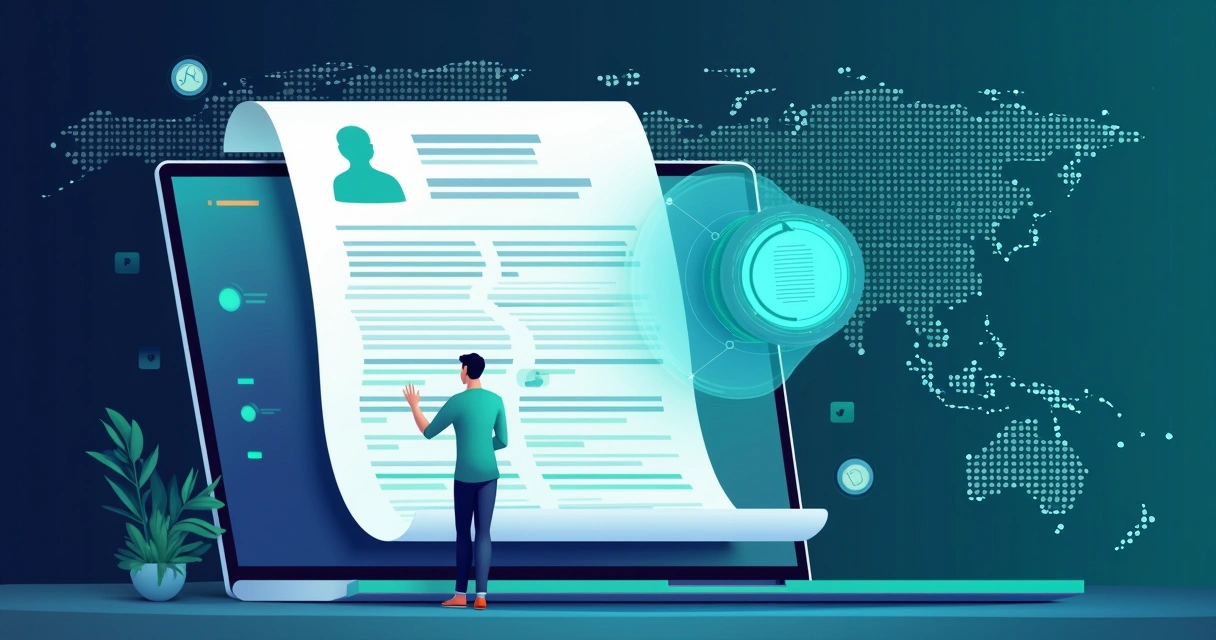
CloudSign.ie’s AI-based contract assistant already helps businesses, big and small, see trouble spots or hidden upside, no lengthy legal review needed. (Read about how teams are using these tools in hybrid and remote setups in our case studies for freelancers going digital.)
Conclusion
Whether you’re overseeing multi-million-euro deals, freelancing on side projects, or just want to avoid late nights sifting paperwork at tax time, getting to grips with how agreements are made, managed, and executed can make the difference between long-term growth and painful, slow losses.
From formation (offer, acceptance, value), to defining fair and transparent terms, to managing deadlines, renewal, and disputes, each step, once manual and risky, now happens faster, more securely, and with fewer errors.
More businesses (and individuals) are moving their agreements to smart, AI-powered digital platforms. The benefits: time saved, risk dramatically reduced, disputes prevented instead of litigated. Automating the renewal and review cycle, keeping everything tracked and accessible, and having a clear record is no longer just for mega-corporations, now it’s for everyone.
CloudSign.ie stands out with its Irish focus, free plan, deep integration with the tools businesses use, and real-world support for everyone from solo operators to entire enterprises. If you’re looking to make your contracts simpler, faster, and safer, there’s never been a better time to try one of Ireland’s most trusted digital agreement solutions.
Don’t wait until a dispute exposes a gap. Give your contracts the time and tools they deserve, with CloudSign.ie.
Frequently asked questions
What are the main types of contracts?
The main varieties include fixed-price deals (where the cost is set in advance), cost-reimbursement models (payment based on expenses plus margin), bilateral agreements (mutual promises on both sides), unilateral offers (rewards for specific acts), express (terms clearly stated) and implied (established by conduct), and adhesion or “take it or leave it” templates. Industry-specific deals (like insurance or employment) often have unique requirements. Choosing the right type helps balance risk, clarity, and speed.
What elements make a contract valid?
A valid arrangement needs a clear offer, genuine acceptance, something of value exchanged (the “consideration”), capacity of both sides to sign (like being of legal age), and a shared intention to make it binding in law. Details should be certain, too much ambiguity and courts may toss it out. Written form isn’t always necessary, but it massively reduces headaches later.
How does the contract lifecycle work?
Arrangements go through familiar phases: first, the idea (initiation), negotiation of terms, signing (execution), tracking and performance (monitoring), then renewal, closure, benchmarking outcomes, and improvement for next time. Digital tools have compressed this cycle, from weeks to sometimes minutes, helping users avoid missed deadlines and lost documents.
How can I create a legal contract?
Start by spelling out what both sides want (offer/acceptance), make sure each gives something of value, and write all key terms: scope, timelines, payment, risk, signatures. Use clear, unambiguous language. For extra security and speed, digital solutions like CloudSign.ie help with template generation, e-signing, and audit trails, ensuring the document is ready for business and the courts. For a simple playbook, our beginner’s guide to digital agreements walks through the must-haves.
When is a contract legally binding?
After a clear offer is made and accepted, with value exchanged and all parties intending to be bound, the agreement is enforceable, unless a law requires a specific form (like written for land sales). Signatures can be ink or digital (as long as the law of your country recognizes it, which Ireland and the EU do). Even informal or implied deals can sometimes count, but paper/digital records are safer for all involved.
